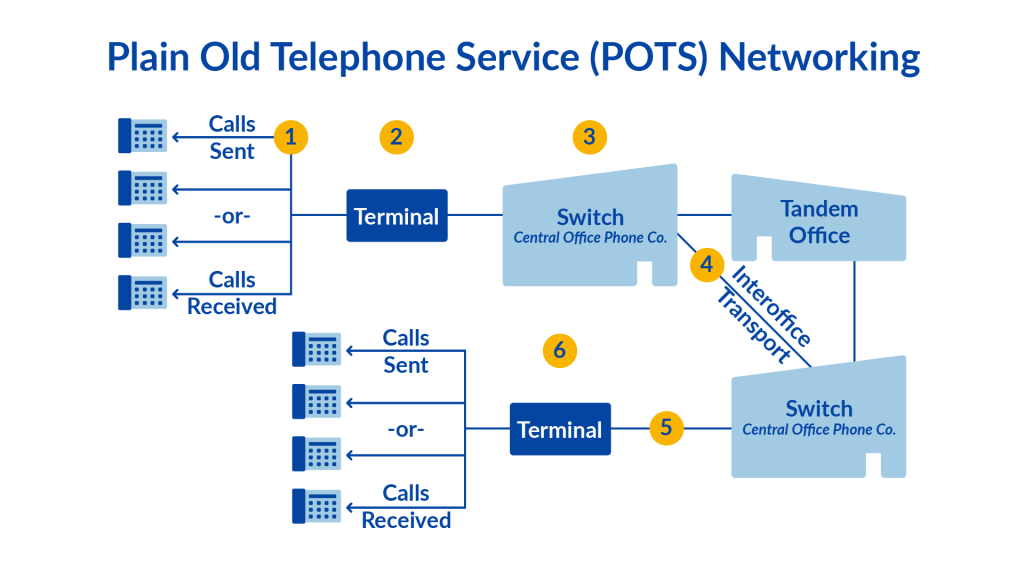PSTN in data communication
Public switched telephone network
PSTN is the worldwide collection of interconnected public telephone network that was designed primarily for analog telephone calls.
PSTN is also referred to as the landlines / plain old telephone service -- POTS.
This is the system that has been is general use since the late 1800's.
Properties of PSTN
- It is also known as Plain Old Telephone Service (POTS)
- It has evolved from the invention of telephone by Alexander Graham Bell.
- The individual networks can be owned by national government, regional government or private telephone operators.
- Its main objective is to transmit human voice in a recognizable form.
- It is an aggregation of circuit-switched networks of the world.
- Originally, it was an entirely analog network laid with copper cables and switches.
- Presently, most part of PSTN networks is digitized and comprises of a wide variety communicating devices.
- The present PSTNs comprises of copper telephone lines, fibre optic cables, communication satellites, microwave transmission links and undersea telephone lines. It is also linked to the cellular networks.
- The interconnection between the different parts of the telephone system is done by switching centres. This allows multiple telephone and cellular networks to communicate with each other.
- Present telephone systems are tightly coupled with WANs (wide area networks) and are used for both data and voice communications.
- The operation of PSTN networks follows the ITU-T standards.
How Do PSTN Phone Lines Work?
Step #1 – Your telephone set converts sound waves into electrical signals. These signals are then transmitted to a terminal via a cable.
Step #2 – The terminal collects the electrical signals and transmits these to the central office (CO).
Step #3 – The central office routes the calls in the form of electrical signals through fiber optic cable. The fiber optic conduit then carries these signals in the form of light pulses to their final destination.
Step #4 – Your call is routed to a tandem office (a regional hub responsible for transmitting calls to distant central offices) or a central office (for local calls).
Step #5 – When your call reaches the right office, the signal is converted back to an electrical signal and is then routed to a terminal.
Step #6 – The terminal routes the call to the appropriate telephone number. Upon receiving the call, the telephone set converts the electrical signals back to sound waves.
This may sound complicated, but the thing to remember is that it takes a few seconds for your call to reach its destination. This process is facilitated by using fiber optic cables and a global network of switching centers.


Comments
Post a Comment